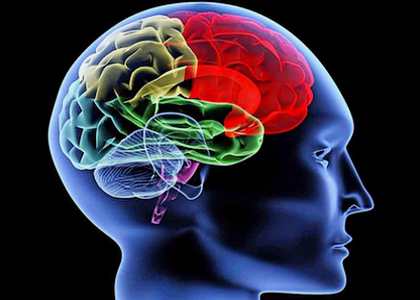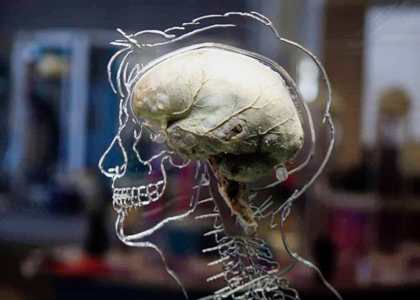Almost everyone used to agree that employing 10% of the brain was a good idea. But it’s true, and the human species is only using 10% of its brain right now.
In the preface to Dale Carnegie’s book How to Win Friends and Influence People in 1936, an American writer called Lowell Thomas asserted what became a widespread claim: “Professor William James of Harvard said that, on average, humans develop only 10% of their latent mental ability.” This notion quickly gained acceptance, and others later claimed that humans only employ 10% of their brains. Is this, however, correct? While it is unclear whether William James, renowned as the “Father of American Psychology,” ever said this, it is undeniably incorrect!
Using 10% of the brain is a myth with no foundation.
Erin Hackett, assistant professor of evolutionary neuroscience at Harvard University, argues that humans never use our brains to their full potential. Julie Fratantoni, a cognitive neuroscientist and the director of operations for the Brain Health Project at the University of Texas at Dallas, believes that the idea of using 10% of the brain is a ridiculous myth. She believes that this 10% may not be related to our ability to use our minds and may instead refer to 10% energy metabolism, 10% electrical activity, or blood oxygen level.
Because of the ubiquity of this myth, students have raised it in class and are intrigued about it. “Whenever someone brings up this myth in my classes, I say, ‘If you’re only using 10% of your brain, you’re probably on a ventilator,” Hackett said.
Hackett compares the activity of the brain to that of the heart at rest. Even when our hearts are not performing at full capacity, they continue to pump. Similarly, even at the most basic level, the entire brain and its cells, known as neurons, are always functioning. He argues that neurons must maintain some amount of activity in order to remain healthy.
Although the brain is separated into several regions, according to Fratantoni and Hackett, this organ functions through multiple networks, and no component of the brain ever functions alone and individually, therefore the idea of using 10% of the brain is utterly useless. Fratantoni illustrated this using the default mode network, which encompasses various cognitive domains for thinking processing and social interactions.
How can we tell which areas of our brain are working?
Functional magnetic resonance imaging (fMRI) is the most effective technology for evaluating brain activity. This neuroimaging approach involves lying in a tube-like scanner and responding to numerous stimuli.
This scanner detects variations in cerebral blood flow, which signals increased energy use in various locations. In this procedure, alternate photographs of the brain are acquired when it is active and again while it is resting, and they are digitally separated from each other (using software such as FSL). From a physiological standpoint, the outcome of this processing demonstrates brain function due to changes in blood flow in the brain.
The three imaging modalities often employed in fMRI are DWI, BOLD, and Perfusion, and all of these methods use an EPI type pulse sequence. Unlike EEG and MEG, which are focused on superficial cortical regions, signals can be captured from all brain regions with this approach.
“The idea is that parts of the brain that get more blood burn more energy,” explained Hackett. “As a result, they’re functionally involved in everything you can think of.”
For the skills we are aware of, our brains need fewer resources. As a result, Hackett believes that when we practice a skill, our brain changes in a variety of ways. To begin with, the brain tissue connected with those areas of expertise is physically enlarged.
The researchers suggest that this expansion is caused by neurons branching out to link with surrounding neurons or by enlarged vasculature, which allows for additional blood flow.
At the same time, the more a skill is practiced, the more efficient it becomes and the less energy it consumes. “The more skilled you become at what you’re learning, the less your brain works,” Hackett explains.
Another effective approach for people to gauge their personal use of their brain is through mental energy, or the conscious effort required to execute a task. Because mental energy cannot be properly evaluated, this method is rather subject-dependent.
Arguments against the assumption that only 10% of the brain is used

A neuroscience expert, Barry Boyerstein, refutes the assumption that 10% of the brain is utilised by citing various scientific explanations. First and foremost, he claims that the brain scans reveal that no matter what we do, all portions of our brain are always functioning. True, some areas of this crucial organ are more active than others at different times, but no part of the brain is fully dormant.
Furthermore, Boyerstein believes that because 90% of our brain is unused, injury to these areas should not affect brain function. However, nearly no region of the brain that is harmed does not result in a loss of physical capacities and capabilities, and even little damage to the smallest sections of the brain can have major consequences.
In comparison to other areas of the body, the brain consumes a substantial amount of oxygen and nutrients and requires approximately 20% of the body’s energy. So, since 90% of it is useless, persons with smaller, more efficient brains have a survival advantage, and if this idea is right, the inefficient brain will be destroyed by natural selection.
Brain cells that are inactive likely to perish and degrade. Autopsies of normal persons would reveal large-scale deterioration if 90 percent of the brain is worthless. Researchers use the single-unit recording approach to monitor single-cell activity in the brain by implanting a small electrode device. If 90% of the brain was useless, this approach would reveal it.
“I guess a better way to think about it is to ask yourself, ‘Do you know what your brain capacity is?'” Fratantoni suggests. “What are you doing to make better use of your brain’s potential?” According to Hackett. “I believe you should work on your skills.”
The reasoning behind using 10% of the brain is completely illogical.
Concerning the myth of utilising 10% of the brain, it has been suggested that people can use this intact portion of the brain to boost their intelligence. This notion has also been ascribed to persons such as Albert Einstein, who was able to use a little more of their brain and thus succeeded in understanding difficult events!
Despite the fact that this is a myth, countless books, films, and short stories have been made about the ten percent brain usage myth. For instance, the novel Dark Field and the film Lucy The concept of reaching the remainder of the brain via medicines or other substances is referenced in these texts. Lucy is a human with supernatural talents who obtained them after accessing more than 10% of her brain. However, this film demonstrates that using more brain capacity is dependent on using more medications.
Finally, it should be noted that the notion of utilising 10% of one’s brain is not only erroneous, but entirely untrue. Although exercise helps improve alertness, the concept that significant areas of the brain are dormant and can be activated is a widely held belief that has no scientific basis.
Although the function of many sections of the brain has yet to be determined, research indicates that all parts of the brain have a role and are not dormant. After a crippling accident or stroke, some people can transfer their abilities to other portions of the brain that take over the function of the destroyed part, according to Hackett.
Some proponents of this pseudo-scientific concept in the new age claim that the other 90% of the brain may be used to demonstrate psychic strength and that it can be developed alongside exceptional sensory perception. If there is no rationale or scientific evidence to support this opinion,
When a part of our mind is missing or damaged, it can rewire itself. So what constitutes 100% can alter, and even if a portion of the brain is damaged or destroyed, our brain can still function to its full potential.
One of the cerebral cortex’s hidden secrets is that just 10% of all brain cells are neurons. The remaining 90% are glial cells, which surround and support neurons, although their role is mainly unclear. So the reality is that we don’t use 10% of our brain, but we only comprehend 10% of how it works.

